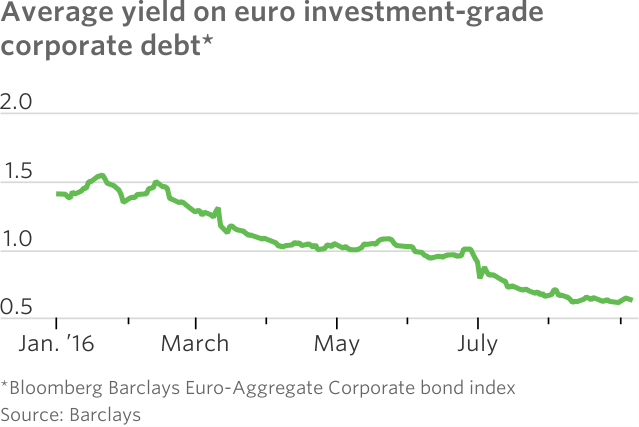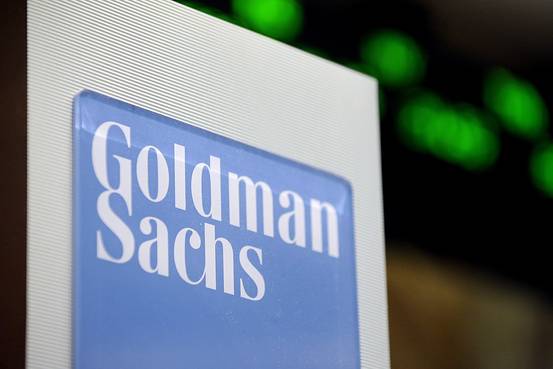Goldman Sachs Has Started Giving Away Its Most Valuable Software
The bank’s new gambit: deploy its technology to win more business from clients
 ENLARGE
ENLARGE
From the kitchen table in his Upper West Side brownstone, Michael Dubno recently scratched out from memory the blueprint for the modern Goldman Sachs Group Inc.
The sketches, dashed out on a yellow legal pad, more or less match what Mr. Dubno drew on a white board 25 years ago, in a dusty corner office on the fifth floor of Goldman’s old downtown headquarters: a schematic for a software database that would help the investment bank make billions of dollars in well-timed trades, and sidestep billions more in losses.
Called Securities DataBase, or SecDB, the system remains Goldman’s prime tool for measuring risk and analyzing the prices of securities, and it calculates 23 billion prices across 2.8 million positions daily. It has played a crucial role in many of the seminal moments of the firm’s recent history, including its controversial trading just ahead of the financial crisis.
Goldman had guarded it closely, resisting offers from rivals such as Deutsche Bank AG to license the database. One former partner recalls huddling with Gary Cohn, one of Goldman’s top executives, a decade ago to ponder what a licensing deal would be worth. Mr. Cohn told his colleagues he wouldn’t do it for $1 billion. For $5 billion? Maybe, he said, according to the former partner.
“It was such a competitive advantage,” Mr. Cohn, who was promoted to president in 2006, said recently.
There is perhaps no better sign of the changes that have engulfed Wall Street than this: Goldman has recently started giving clients the tools that made it a trading powerhouse, for free.
The firm’s motives aren’t altruistic; rather, many of the edges that once made Goldman’s traders feared and admired have been blunted. New rules have limited banks’ trading risks, and made it costly to hold large inventories of stocks and bonds on their books. And electronic trading has squeezed margins, dimming the clamor of trading floors across Wall Street.
“Regulation has dulled that advantage,” said Peter Carr, a former Morgan Stanley executive who teaches at New York University.
Traders and executives tap into SecDB to inform how to price securities, and how the value of those assets may change with a twist on the dial on any one of thousands of potential variables. That information can be used to analyze potential trades—and then to monitor the risks posed by those positions.
What made it the envy of Wall Street, though, was its ability to scale up to include new classes of securities, new trading desks, even whole businesses. And the data it harnessed was all in one place. Megamergers left rivals with a hodgepodge of different systems and different factions of employees loyal to each of them. Goldman avoided big acquisitions, evading issues that would slow its ability to track risks.
Thus, Goldman’s new gambit: Deploy its technology to win more business from clients. Many of those tools are being offered in the form of web-based applications that customers can customize and operate on their own.
“It’s the content, tools and analytics we’ve been working on for decades, and we’re putting it in the hands of clients,” said R. Martin Chavez, Goldman’s chief information officer.
Some investors and clients harbor doubts that Goldman can pivot so sharply.
“I’m not sure their core competency is being a tech company,” said Jason Brady, chief executive of Thornburg Investment Management, which manages $55 billion and trades with Goldman. “So it’s a shift, and I’m not sure I want that to be their role.”
The trick for Goldman will be to win over clients like Jeffrey Young, who co-heads an investing unit within Ramius LLC, a New York money manager.
A Goldman saleswoman introduced Mr. Young to a Marquee app during a choppy period in the markets, when he needed regular updates on the bespoke derivatives he had bought from Goldman.
“They’re trying to be more proactive—instead of just saying ‘we need to satisfy what the client wants,’ they’re saying ‘let’s make sure they’re as happy as possible,’” he said. “They’re more open with a lot of their intellectual property.”
Goldman is seeking its niche in a crowded field. BlackRock Inc. offers its own risk-management system, called Aladdin, and Bloomberg LP’s terminals remain a ubiquitous presence on trading floors.
Mr. Chavez is an alumnus of J. Aron, the commodities trading arm where many of Goldman’s leaders, including Chairman and Chief Executive Lloyd Blankfein and his top deputy, Mr. Cohn, got their start.
Inside Goldman, J. Aron was a backwater. While the firm’s stock traders were doted on by waiters with trays of cocktail shrimp, J. Aron’s offices featured ragged furniture and spittoons.
SecDB’s run within Goldman began when Marc Spilker, a currency-options trader, sought a pricing database with the flexibility to add new derivatives. He turned to Armen Avanessians, a former Bell Labs engineer Mr. Blankfein had hired and the man one Goldman alum referred to, somewhat affectionately, as the “Darth Vader” of the strategists, or strats—a team of engineers J. Aron had begun to assemble to work on computer models.
The task fell to Mr. Dubno, a college dropout and former videogame developer who had come to Goldman to work for famed economist Fischer Black. Two other engineers, Glenn Gribble and Kevin Lundeen, soon followed. Mr. Avanessians hired Mr. Chavez in 1993 to extend SecDB to J. Aron’s commodities desk.
Even by J. Aron’s standards, Messrs. Dubno, Gribble and Lundeen stood out. They destroyed nearly all of their office’s ceiling tiles tossing a volleyball around the room, and blasted rock music. When their next-door neighbor complained, the firm fitted the office with soundproofing insulation, Mr. Dubno said.
The SecDB system received an early test in 1998, when hedge fund Long-Term Capital Management nearly collapsed. Goldman used the database to help analyze its exposure, an episode that helped raise SecDB’s profile within the firm, according to people familiar with the matter.
Over time, SecDB spread to other parts of J. Aron and, ultimately, the entire firm. As Mr. Blankfein rose up the ranks, he insisted that SecDB and the strategists join him.
By the time the housing market boomed, SecDB had reached Goldman’s firmwide risk and finance departments. “Thank goodness we did that when we did,” recalled Robert Berry, who heads Goldman’s market-risk team.
As the prices on securities tied to subprime mortgages began to decline in late 2006, Mr. Berry and other executives plotted out how the firm’s positions performed against its models. They could soon tell something wasn’t right.
Goldman made some profitable bets against the housing market and, in some instances, began reducing exposure to other counterparties, even as many of their peers and clients remained bullish (later, the firm’s moves were roundly criticized as evidence it put its own interests above its customers’).
Goldman marked down the value of its mortgage bonds, a step that led to a bitter fight over collateral with insurer American International Group Inc., Mr. Cohn said. The dispute helped trigger AIG’s massive bailout by the U.S. government.
Mr. Chavez left Goldman in the late 1990s, eventually founding a Silicon Valley startup he sold in 2004. While running that company, Mr. Chavez filed an application for a patent on a system some Goldman partners found similar to SecDB. They were incensed that Mr. Chavez had failed to credit Goldman, and brought it to Mr. Cohn’s attention, people familiar with the matter said.
Goldman sent Mr. Chavez “a nasty letter,” one person said. Mr. Cohn, though, declined to authorize a lawsuit. When Mr. Chavez sold his startup, Mr. Cohn persuaded him to rejoin Goldman.
Goldman elevated Mr. Chavez to CIO in 2013. The flagship in his strategy is Marquee, a series of applications that allows clients to tap into SecDB and other systems.
One app called Simon offers a platform for independent brokers to customize and buy structured notes. Another, Athena, allows Goldman’s corporate clients to execute their stock-buyback programs.
The firm’s engineers are also building a data warehouse that will store all of the information produced internally in one location, a so-called “data lake” that is Goldman’s answer to the “customer analytics” movements that have revolutionized industries ranging from advertising to retailing.
“Goldman still has a strategy, and the next wave of competitive challenges,” said Mr. Dubno, who left the firm in 2005. “And Marty has made a few moves on the chessboard.”
Write to Justin Baer at justin.baer@wsj.com




























.jpg)
.jpg)
.jpg)
.jpg)
.jpg)
.jpg)
.jpg)
.jpg)
.jpg)
.jpg)
.jpg)
.jpg)
.jpg)
.jpg)
.jpg)
.jpg)
.jpg)
.jpg)
.jpg)
.jpg)
.jpg)
.jpg)
.jpg)
.jpg)
.jpg)
.jpg)
.jpg)
.jpg)
.jpg)
.jpg)
.jpg)
.jpg)
.jpg)
.jpg)
.jpg)
.jpg)
.jpg)
.jpg)
.jpg)
.jpg)
.jpg)
.jpg)
.jpg)
.jpg)
.jpg)
.jpg)
.jpg)
.jpg)
.jpg)
.jpg)
.jpg)
.jpg)
.jpg)
.jpg)
.jpg)
.jpg)
.jpg)
.jpg)
.jpg)
.jpg)
.jpg)
.jpg)








